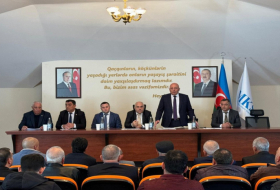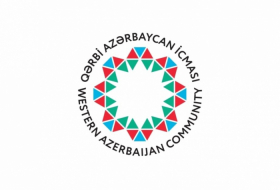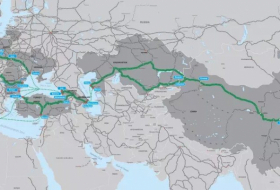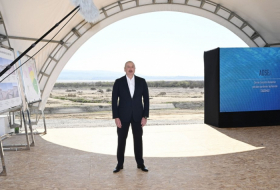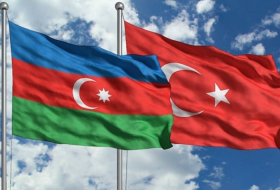The ACG developments are underpinned by this expertise and while it has been an investment that builds on tradition, it has also been ahead of its time in technology, transferring industry’s cutting-edge innovations transfer to the Caspian region.
Many of BP’s own new technologies have been successfully applied to ACG’s development operations and projects in Azerbaijan, some of them for the first time in the Caspian.
Extended reach drilling (ERD) enables well targets to be located in a considerable distance from the platform thereby increasing recovery. The longest ERD well we’ve drilled so far is 6.4km from Chirag. We’re confident that this technology will allow us to maximise recovery from ACG for many decades to come.
High-angle (near horizontal) drilling technology, which provides the opportunity to complete wells with a large formation thickness thereby increasing the production rates.
BP Well Advisor ensures safe, reliable and efficient well operations by using real-time information. Its integrated consoles enable to amplify early warning indicators of potential well construction issues, enhancing operational decisions with real-time well surveillance, boosting drilling efficiency, reducing non-productive time. BP Well Advisor was introduced to the Caspian in 2012 when its casing running console became fully operational on all three Azeri platforms and Deepwater Gunashli.
BP leads the way in what is known as 4D seismic acquisition and it has already been applied to the Caspian. In ACG, 132km of seabed seismic acquisition cables have been installed.
BP sees Azerbaijan as a major centre of technology expertise in well completions. Completion technology such as open hole gravel packed screens and large diameter tubulars equipped with the fibre-optic allows higher production rates while controlling the amount of sand being produced. Various sand-face completion types like Cased and Perforated (C&P), Stand-alone Screens (SAS), Expandable Sand Screens (ESS), Pre-packed and Open Hole Gravel Packed Screens were installed and piloted at early days of ACG life, before transferring to other BP regions.
Today in ACG the standard completion design for producing wells is the Open Hole Gravel Pack (OHGP). This was a real breakthrough in the early 2000s, and we still find it effective today. Most of the wells are packed with natural proppant while recently non-radioactive tracer proppant has been used. Over the years the OHGP completion technology has undergone significant enhancements.
BP’s Azerbaijan business has also looked at potential application of gravel pack completion in cased hole during the up-hole recompletion. The Cased Hole Gravel Packed completion was successfully installed in one East Azeri D06 producer in 2017.
A number of new technologies deployed at the completion stage changed the way in which the ACG field was developed in the direction of better wells and reservoir performance and lower intervention costs.
Distributed Temperature Sensing (DTS). The first fiber-optical cable was installed in ACG producer in 2004. Restricted wellhead access, high rate, and differential depletion of the different reservoir intervals limited conventional production logging possibilities, etc. justified the decision made on installation of permanent DTS fiber-optical cables in wells for monitoring wells behavior and reservoir performance.
Distributed Acoustic Sensing (DAS). Over the past five years this technology has been extensively used for sand monitoring, where outcome contributed to optimizing drawdown to achieve maximum sand free rate and for sand shut-off intervention to isolate identified sand entry zones.
In-Well Seismic - vertical resolution of surface seismic data suffers from energy loss due to the distance of travel from the source to the reservoir and then back to the surface deployed recording devices. Placing recording instrumentation within the wellbore to record 'one-way' energy improves this. If a permanent fibre is employed within a well, this activity could happen many times thus providing a high resolution 4D image around the wellbore which could monitor fluid movement on a finer scale than surface seismic or detect minor compaction effects in the reservoir. The fiber-optical cable permanently installed in some of ACG wells will be used for repeat 4D acquisition in the future.
Downhole Flow Control Valve (DHFC). The world's first subsea water injectors, completed with the expandable sand screens and downhole flow control valve were put on line on the Deepwater Gunashli field in 2008. These completion technologies reduced the number of required dedicated injectors and by running them subsea, we avoided complex extended reach drilling from the platform. The completions also helped reservoir engineers manage reservoir depletion in an efficient manner, improve sweep efficiency and maximize multi-zone recovery.
The first dual zone water injector in BP equipped with the inline DHFC valve and DTS came online in 2017. Combination of two technologies allowed to control injection within two sub layers and monitor fracture propagations through sands to ensure conformance across two injection zones.
The world's first 3-zone water injector with the DHFC equipped with DTS came on line in 2018. This has marked another big milestone for this game-changer technology in ACG to properly manage multi-layer reservoirs and opened for further applications in other BP regions.
BP also focuses on delivering technology solutions to mitigate and manage potential risks identified for each element of the production system. These may be technologies that would allow to avoid (or reduce) sand production into a well, or new tools or remediate hydrates in well facility:
BP Slug Controller - wellbore slugging in ACG wells is a major risk to production sustainability. High amplitude of slugging and high rates of change in drawdown put wells at potential risk of sand control failure. It also brings risk for serious process plant upsets and efficiency losses. This technology, which helps to control the slug situation, is deployed at all ACG platforms.
BP Drawdown Controller - instability and exceeding the bean up limit when the well is put back on production after shut-down may lead to sand production due to the sand prone nature of ACG wells. The technology allows to maintain the downhole pressure at the depletion target value by applying constant drawdown to the well. It also enables more efficient and smooth bean-up in the well. It is currently is installed on two ACG Platforms
APEX Production Simulation, Monitoring and Optimization tool - enhances well production optimization capability to address Base Management optimization challenge.
Pipeline inspection gauge (PIG) is a special tool used to inspect the internal conditions of a pipeline, capture and record the geometry and reveal any corrosion information related to the pipelines. This information is then downloaded to a computer when the PIG is removed from the pipe to enable engineers to 'see' inside the line. This process is known as intelligent pigging.
To ensure the integrity of subsea pipelines, rigorous monitoring is done by using remotely operated vehicles and autonomous underwater vehicles (AUV). The challenge we face is poor visibility in the murky Caspian waters, particularly in water depths of less than 25m. So, we’ve introduced some state-of-the-art equipment never utilised in the Caspian before to provide pipeline assurance.
It carries out acoustic surveys, it works well and it allows inspections to be performed faster and more efficiently. The Caspian became one of the leading regions utilising AUV technology and is exporting knowledge to BP globally concerning these operations.
Some new technological tools such as Crawler and Drone have been successfully deployed for facility and structure inspection on some of ACG platforms. Further development of these technologies is being assessed to expand the area of their application to all of ACG platforms.
More about: #ACG




















